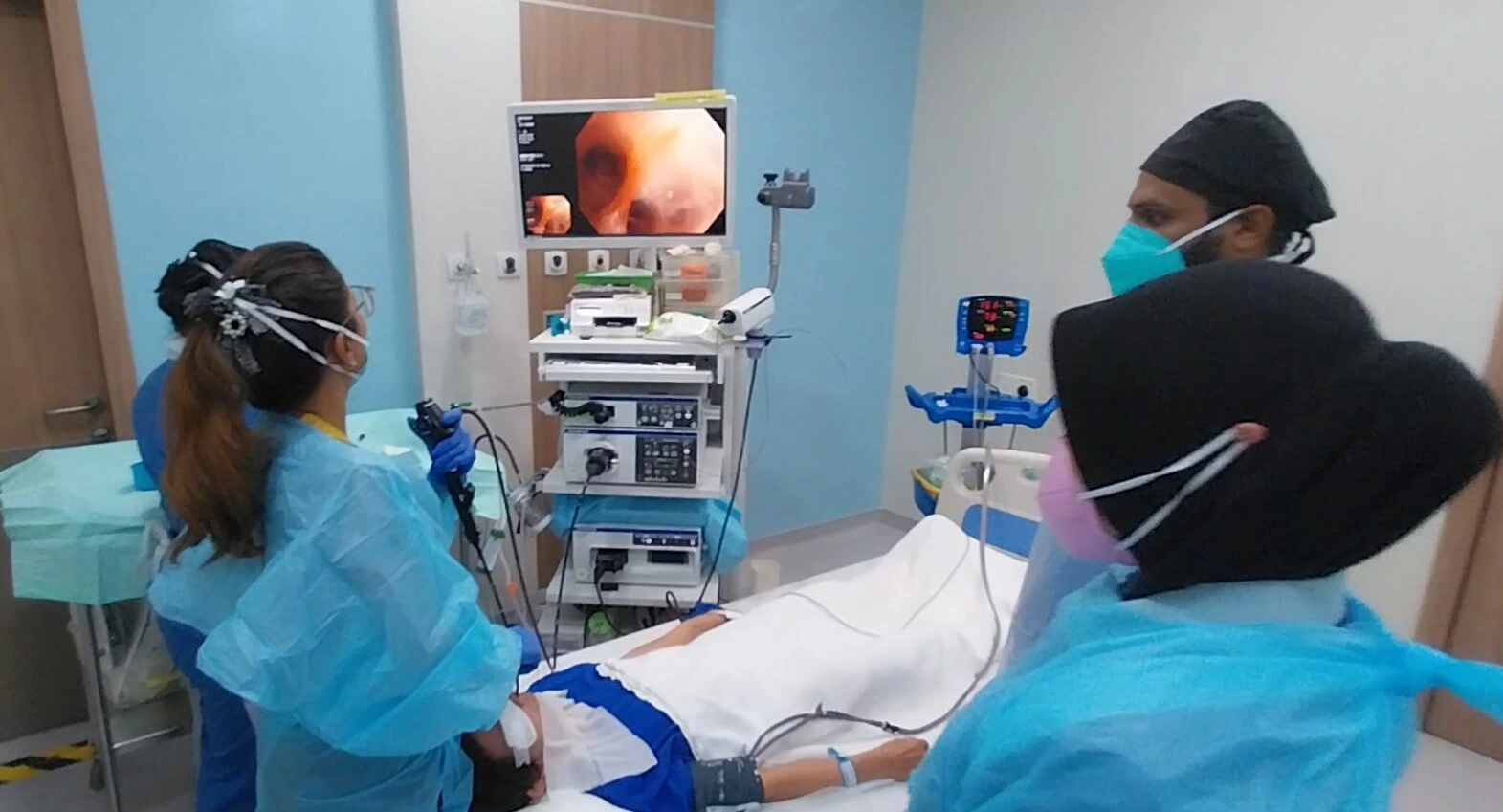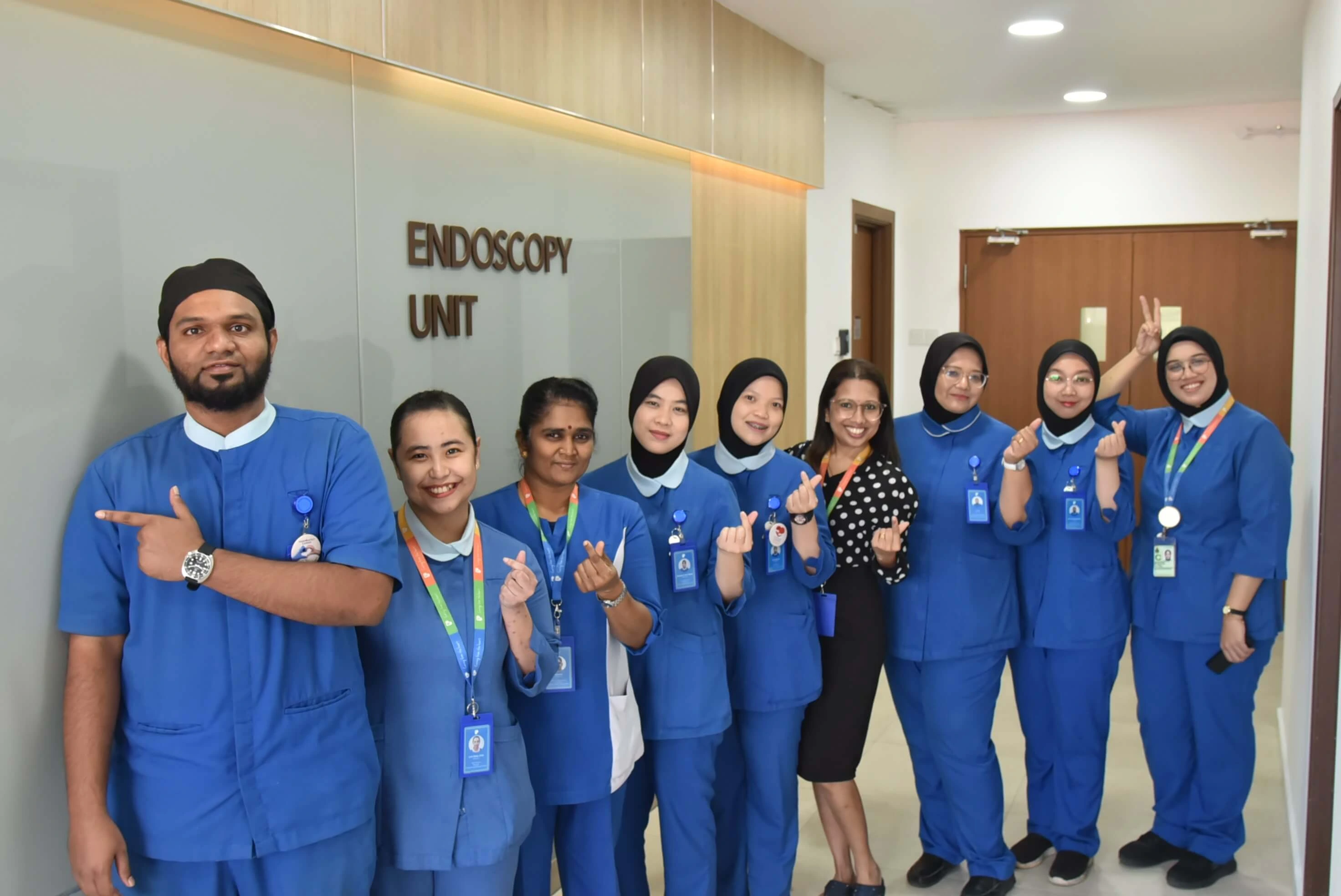
1. Is lung cancer more common in the elderly?
This is a misconception. Nowadays, cases are no longer limited to age, smoking or not, race or gender; it is becoming more common to see cases in the younger age group, and the youngest patient was only 15 years old.

Dr Sangeta Vadivelu, Respiratory Medicine Specialist (Lung Specialist)
2. What are the causes of lung cancer?
There are many, which include gene mutations, environmental factors, diet. For example, kitchen fumes, microplastics (plastic particles less than 5 millimeters in diameter), asbestos, silica dust, airborne pollution particles, etc.; when these carcinogenic particles are inhaled, they can cause lung obstruction or injuries (inhalation injuries) and stimulate abnormal cell growth which will lead to lung diseases and even lung cancer in the long run.
3. Can you share the symptoms of lung cancer?
Early symptoms include cough, haemoptysis (coughing up blood), fatigue, fever, unexplained weight loss, poor appetite, lumps in the chest or neck, and other symptoms such as feeling discomfort.
4. What about diagnosis and treatment?
We can do it clinically based on patients’ symptoms. To get a confirmatory diagnosis, we will need a tissue biopsy, where tissue sample is taken from the lungs and sent to a laboratory for histopathological examination (HPE). Biopsies can confirm cancer and determine its stages, besides knowing the cancer grade: how aggressive it is and the origin, which means where the cancer started.
A computed tomography scan (CT scan) may also be performed before biopsy to confirm the location of the tumour. Subsequently, we can perform a bronchoscopy endobronchial ultrasound (EBUS) guided transbronchial lung biopsy.

Treatment for lung cancer depends on its stages. If detected early, treatment is curative in intent with surgery being the mainstay. For cancer at an advanced stage where it has spread to the brain, bones or distant organs, treatment will be more to of palliative in nature.
5. About Endobronchial ultrasound (EBUS)
EBUS is a new technology that combines bronchoscope with an endoscopic ultrasound probe. It can diagnose different lung diseases including inflammation, lung infections or cancer. It is a procedure performed by a Respiratory Medicine Specialist (lung specialist) whereby EBUS bronchoscopy uses a flexible tube that goes through the nostrils and into the trachea and lungs.

EBUS complements a traditional bronchoscopy whereby EBUS bronchoscopy is a valuable tool for diagnosing and staging lung diseases, especially lung cancer. It offers improved visualization. The ultrasound probe attached to the bronchoscope provides real-time images of the airways and surrounding structures, including lymph nodes. This allows for more precise identification of abnormalities. EBUS increases diagnostic accuracy - can help detect small nodules and lesions that might be missed with traditional bronchoscopy and a less invasive approach compared to traditional bronchoscopy. However, the choice between the two procedures will depend on the specific clinical situation and the patient's individual needs.
Key Benefits of Lung Endobronchial Ultrasound (EBUS)
✅Minimally invasive, no need general anaesthesia, can be performed under local anaesthesia or sedation.
✅Fast recovery. Patient can be discharged within 1-2 days if they are doing well.
✅Diagnosis of cancer at early stage due to highly accurate lesion location, and with aid of high-resolution ultrasound imaging features.
✅Lower risks of bleeding and pneumothorax.
EBUS is now available at Pantai Hospital Sungai Petani! Contact us today!
KKLIU 2863 / EXP 31.12.2026


